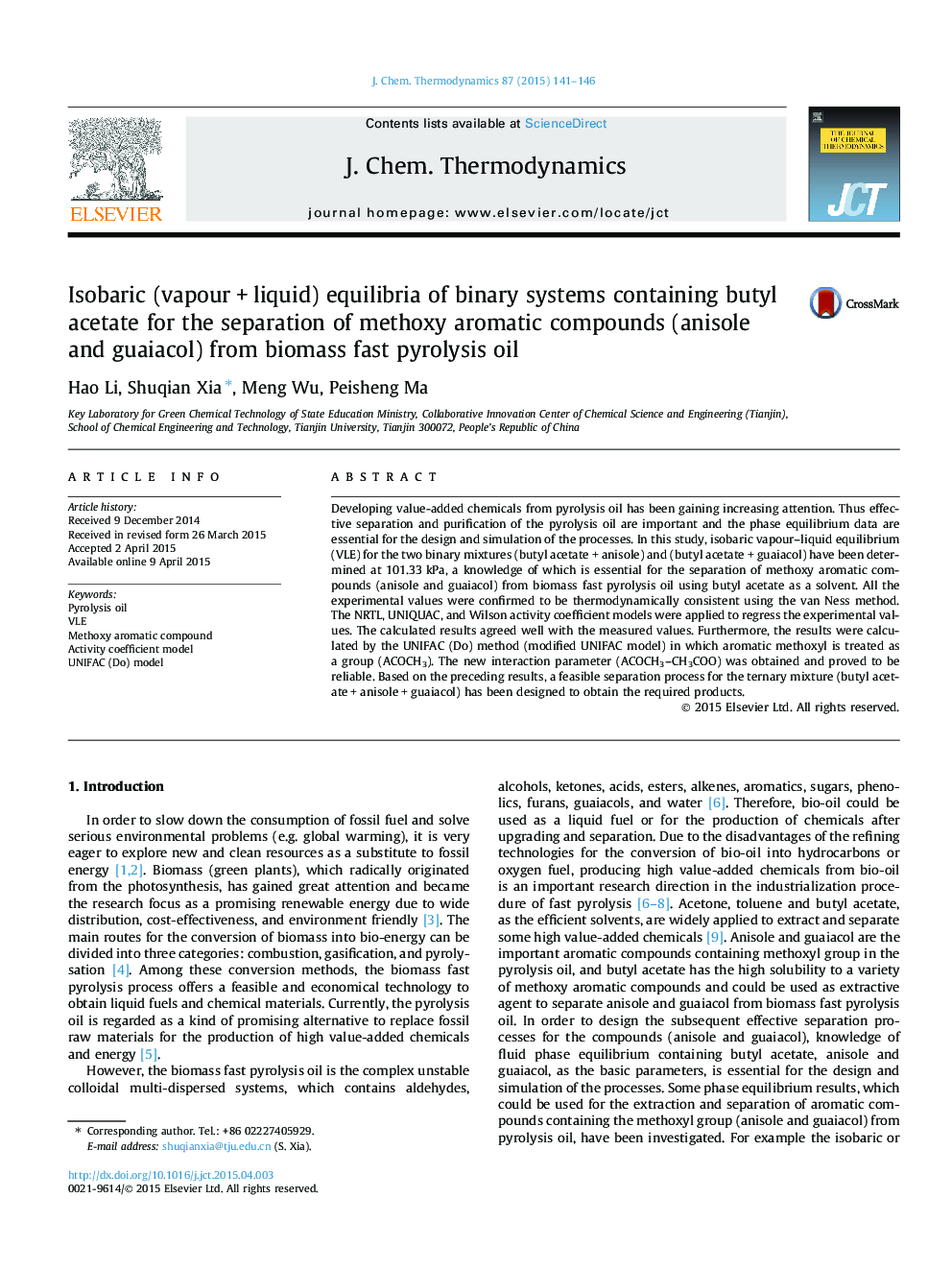| Article ID | Journal | Published Year | Pages | File Type |
|---|---|---|---|---|
| 215159 | The Journal of Chemical Thermodynamics | 2015 | 6 Pages |
•The two binary systems related to pyrolysis oil have been reported.•The VLE data were correlated well by the activity coefficient models.•The UNIFAC (Do) model was applied to predict the experimental VLE data.•The interaction parameter (ACOCH3–CH3COO) was obtained and proved to be reliable.•The obtained interaction parameters by NRTL model were used in the separation process design for the ternary mixture.
Developing value-added chemicals from pyrolysis oil has been gaining increasing attention. Thus effective separation and purification of the pyrolysis oil are important and the phase equilibrium data are essential for the design and simulation of the processes. In this study, isobaric vapour–liquid equilibrium (VLE) for the two binary mixtures (butyl acetate + anisole) and (butyl acetate + guaiacol) have been determined at 101.33 kPa, a knowledge of which is essential for the separation of methoxy aromatic compounds (anisole and guaiacol) from biomass fast pyrolysis oil using butyl acetate as a solvent. All the experimental values were confirmed to be thermodynamically consistent using the van Ness method. The NRTL, UNIQUAC, and Wilson activity coefficient models were applied to regress the experimental values. The calculated results agreed well with the measured values. Furthermore, the results were calculated by the UNIFAC (Do) method (modified UNIFAC model) in which aromatic methoxyl is treated as a group (ACOCH3). The new interaction parameter (ACOCH3–CH3COO) was obtained and proved to be reliable. Based on the preceding results, a feasible separation process for the ternary mixture (butyl acetate + anisole + guaiacol) has been designed to obtain the required products.
